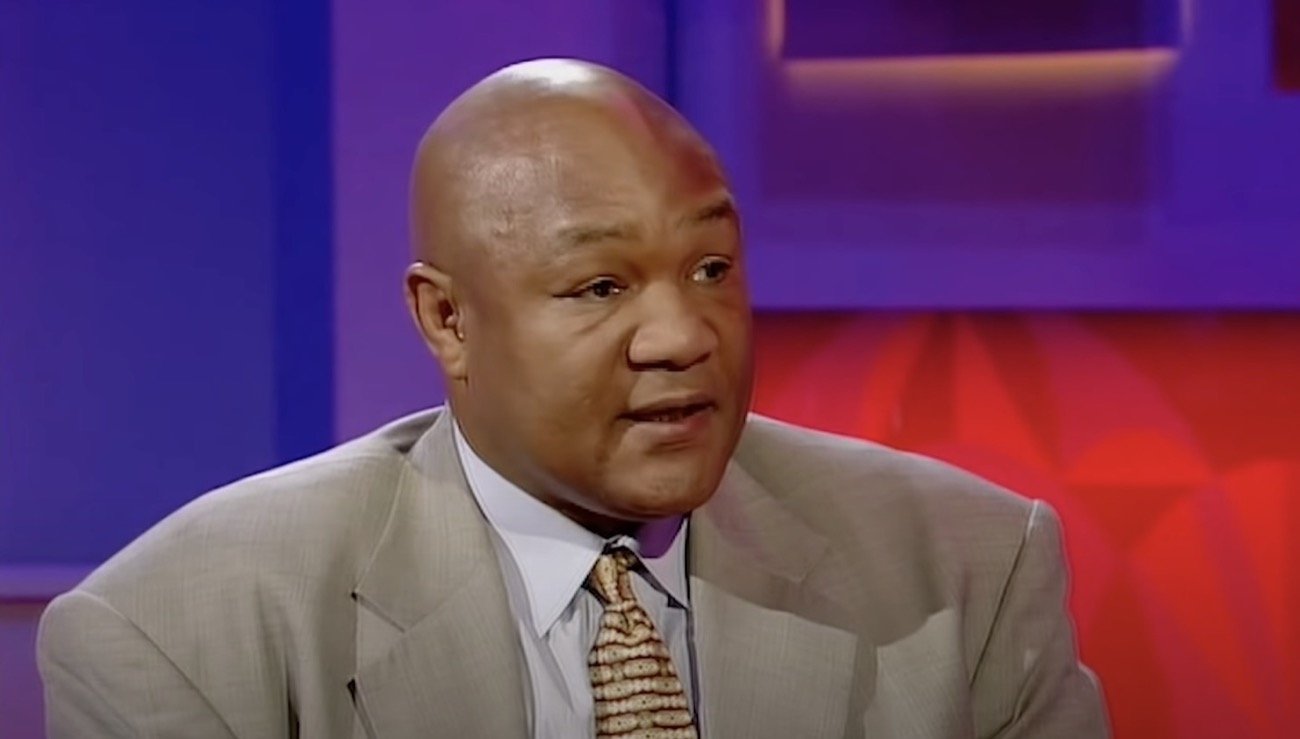When you take a look back at the early fights in George Foreman’s unlikely, often ridiculed (at the time, not later) comeback, it’s easy to see why so many critics felt the former heavyweight champion had almost no chance of regaining the crown, or of beating Mike Tyson. The shaven-headed “Big George,” aged almost 40, was lumbering, he wasn’t too hard to hit and he wasn’t throwing punches with bad intentions.
Foreman at this stage in his ring return often backed off an opponent when he was hurt, inviting the referee to come in and stop the fight. “Never a punch in anger,” was one of Foreman’s rallying cries at the time. Back in February of 1988, Foreman took on an Italian fighter and was then supposed to face a Swedish journeyman. Guido Trane, a short, stocky 29-year-old, faced a 6-0 Foreman in Las Vegas and a bunch of Trane’s fans showed up.

For a few rounds, Trane, 13-7-4, was able to keep up with Foreman, even managing to stand up to the former king’s shots as he landed a few of his own. Foreman’s left jab was still there, the critics noted, but not too much else. Eventually, seeing Trane was cut around the eye, Foreman basically invited referee Mills Lane to stop the fight. Boos rang out as the fight came to its unsatisfactory conclusion. Those fans who wanted to see a man fall in violent fashion – and what another type of fight fan is there – were left disappointed.
This was the new George Foreman, the humanitarian. It was a far cry from the days of Foreman’s brutal fights with Joe Frazier, Ken Norton and Ron Lyle. Bug the fan interest remained. The whole Foreman comeback story had pulled in the collective imagination of the fans. Could he possibly win back the title, or would Foreman crash in highlight-reel fashion instead? The possibility of both scenarios kept the paying fans coming.
After doing away with Trane, Foreman was supposed to fight Anders Eklund on March 19, also in Vegas. This fight might have been somewhat interesting, with Eklund being both tall and game. Instead of taking on another European fall guy in his comeback, Foreman next met former light-heavyweight and cruiserweight champ Dwight Muhammad Qawi. And we all saw the way the 5’7” Qawi managed to bounce shot after shot off Foreman’s head; Qawi eventually running ot of gas and quitting. Eklund faced another former heavyweight champion in his next fight, being blasted in a round by Tim Witherspoon.
At this stage in time, Foreman was no big-hitting destroyer, he was more of a slow-motion clubber who would turn away when he saw a man hurt. This version of George Foreman, the ever-present critics insisted, would be no match for the rampaging Mike Tyson. That fight never happened, but in time Foreman got his snap, his killer instinct back (see his poleaxing of Gerry Cooney in 1990). And of course, Foreman made history on the night of November 5, 1994.
Rewind to the evening of February 5, 1988, when Foreman was getting tagged by Guido Trane, and no such miracle looked likely. Foreman proved in his comeback that taking things nice and steady is sometimes the way to go.
